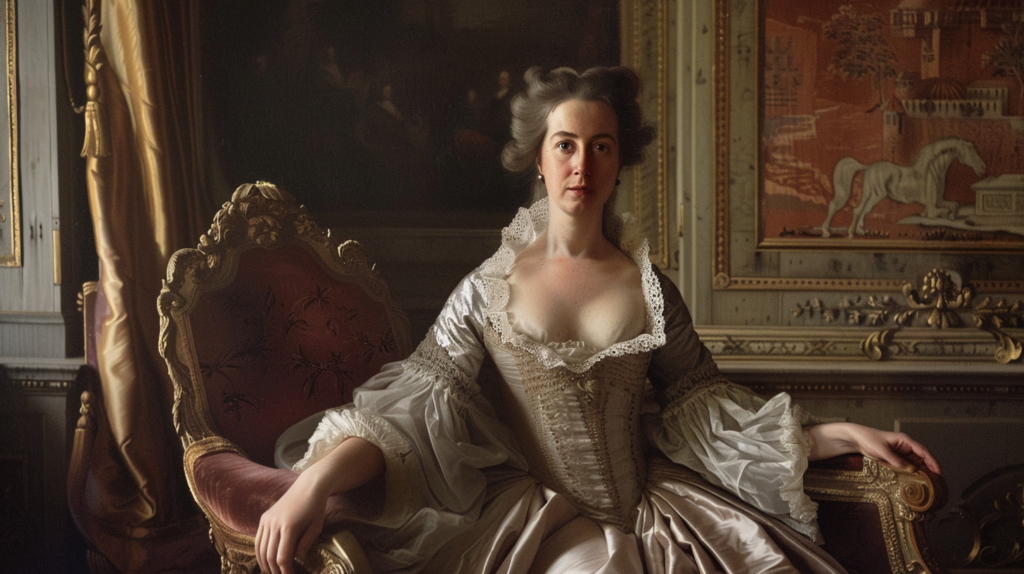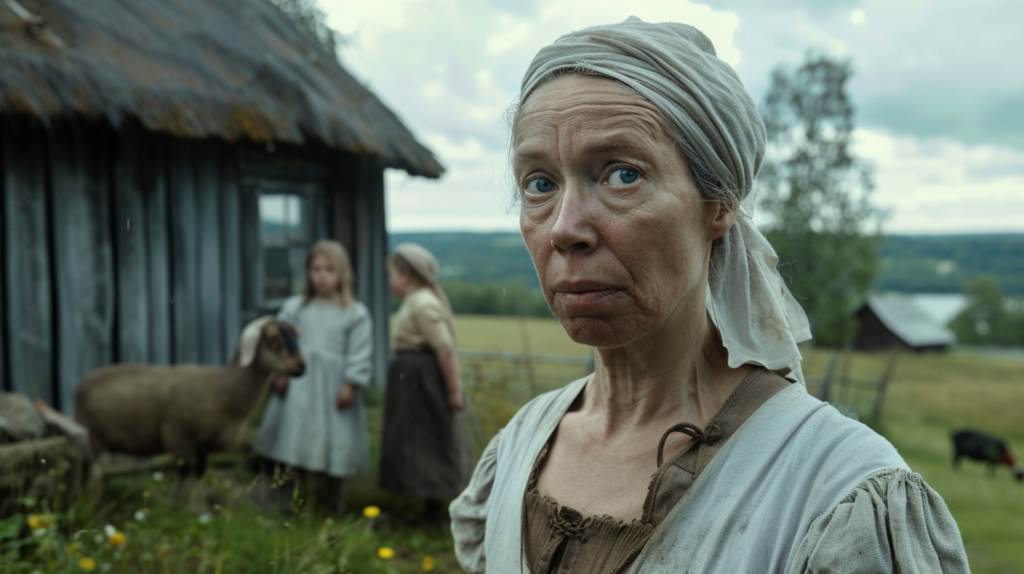In this theme of Women and War, we explore the lives of women during war. In previous posts we have explored life on campaign, and life as prisoner of war. Let’s turn to the women who, although in different ways, were equally affected by war – those who remained behind to take care of home and children.
In Sweden, there was a system with allotted soldiers, meaning soldiers were recruited from their local area, where they were given a croft to live on in exchange for serving in the army. It was often the local farmers who came together and appointed who would serve as the soldier in their district (such a district was called a ”rote”, and consisted of around four larger farms). This was different from enlisted soldiers, who were hired directly by the state.
When the allotted soldiers were called out to war, their families stayed behind because they had a croft to take care of. While the man was away, and if any sons were underage, the woman became solely responsible for the house and farm. This applied to ordinary farm women as well as the upper class.
Some historians have spoken of a “female liberation” during this time, but if so – this was only the case for noblewomen. For the ordinary soldier’s wife, life became terribly uncertain.
The first decades of the 18th century were characterized by a sort of “female dominion” within the Swedish nobility. During the Great Northern War (1700-1721), a large portion of the noblemen were in the field, and those left to manage the many estates and handle business affairs were their wives.

Even after the war ended, there was still an unusually high percentage of women as estate owners, as their husbands had perished during the war. The most well-known of these is probably Christina Piper (AI-image above), married to Carl Piper, one of Karl XII’s closest men.
Carl Piper followed the king to war in 1700, and after that, it was Christina who managed the family estates. When her husband became a prisoner of war in Russia in 1709, she acted decisively to secure his release, although this never happened. He died in Russian captivity in 1716.
As a widow, Christina continued to manage her estates. She renovated and built new structures and ran an alum works in Skåne, which under her leadership became the largest business in the county. She established schools and hospitals for her employees.
This is an example of how noble women gained increased influence when their husbands went to war, which they could retain even after he was taken prisoner or died – something that was impossible for the wives of ordinary soldiers.

When the allotted soldier went to war, his wife became the head of the croft, if there was no adult son at home.
However, there were many differences between the noble ladies and the soldier’s wives. If a soldier died or was captured, his position had to be immediately filled by a new soldier – and thus, the croft would go to him. Therefore, the uncertainty must have been incredibly heavy for the soldier’s wife managing the croft – at any moment, she could be forced to leave with her entire family.
Sometimes it could be resolved. It could be that the new soldier was unmarried, and then the widow could marry him to stay on the croft. Or if she had an adult son, he could take his father’s place, allowing her to stay for the time being. Otherwise, she and any children had to manage as best they could.
Years could pass without the wife receiving any sign of life from her husband – the postal service was highly unreliable. It might happen that during her husband’s absence, she wished to live with someone else. In such cases, she had to go to the cathedral chapter and certify that she had not heard from her husband for however long time.
If there was no indication that he was still alive, the wife was allowed to remarry. Therefore, it could happen that some poor man returned after many years in the army to find his wife remarried.
So far in this theme, we have seen that though women genearlly did not participate in battle, they were equally affected by war as men. In the next post, we’ll get to know a few women who actually became soldiers by disguising themselves as men.
Source:
Åberg, Alf. Karolinska kvinnoöden. (1999)

